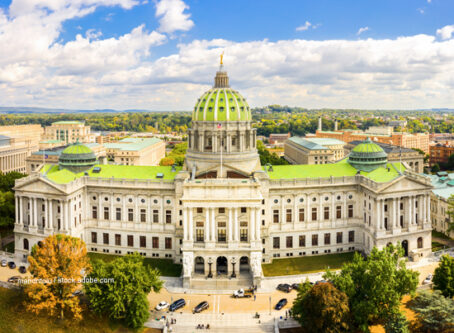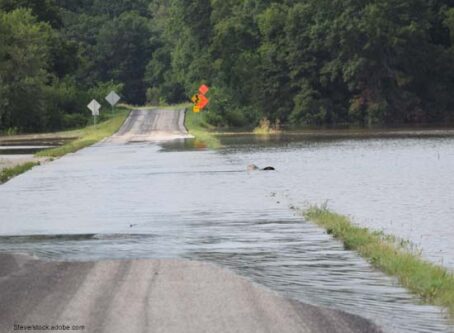Eight states pursue, act to revise speed limit rules
Speed limits on roadways of all sizes are a topic at statehouses from the Carolinas to the upper Midwest.
Maryland
One Maryland speed limit bill is nearing statehouse passage.
Sponsored by Del. Mary Lehman, D-Anne Arundel, HB193 would authorize Anne Arundel County and municipalities within the county to lower the maximum speed limit to 15 mph on certain roadways after performing an engineering and traffic study.
The state already grants the authority to Montgomery County and its municipalities. Similar authority is given to Calvert County.
Lehman recently told the Senate Judicial Proceedings Committee that pedestrian fatalities are a serious problem in Anne Arundel County.
“The faster cars travel, the greater the chance there is for fatal injuries to pedestrians, bicyclists, passengers and drivers,” Lehman testified.
She added that giving the county and local jurisdictions authority to lower speed limits is warranted.
House and Senate lawmakers have voted to advance the bill to the governor’s desk.
Michigan
Action taken in Michigan is intended to address “flaws” in how the state has set local roadway speed limits.
Michigan law states that an engineering and safety study must be conducted to modify a speed limit. Additionally, speeds on state and local roads must be rounded up to the nearest multiple of 5 mph of the 85th-percentile standard.
Gov. Gretchen Whitmer, a Democrat, has signed into law a bill to update how the state observes the 85th-percentile speed rule – the speed at or below which 85% of vehicles travel in free-flowing traffic. House and Senate lawmakers approved the bill by unanimous consent.
Sponsored by Rep. Bradley Slagh, R-Zeeland, HB4012 gives the state flexibility to round down the 85th-percentile speed when necessary. Local officials could set the speed to any multiple of 5 mph within 5 mph of the 85th percentile.
Slagh has used the example of the 85th-percentile speed on a roadway with an average speed of 37.6 mph.
The new law gives the state flexibility to set the speed at 35 mph, instead of requiring an increase to 40 mph.
Slagh added that the rule change removes the requirement that local governments complete an engineering and safety study to alter a speed limit. Instead, a modified speed limit could be determined in accordance with traffic engineering practices that provide “an objective analysis of the characteristics of the highway.”
Additionally, the speed limit is permitted to be set below the 85th percentile if an engineering and safety study shows a situation with hazards to public safety that are not reflected by the 85th-percentile speed. A speed limit could not be set below the 50th-percentile speed.
Missouri
Two Missouri bills making progress at the statehouse would revise certain speed limit rules.
The first bill, HB1802, would decrease the speed limit on county roads without a posted speed from 50 mph to 40 mph. The focus of the legislation is gravel roads.
Rep. Ron Copeland, R-Salem, said the change is needed to save counties money and to save lives.
He added that currently, a county must petition the state to have a speed limit lowered. The bill would remove that requirement.
“Forty is still a little excessive, but it’s a lot better than 50,” Copeland told the House Transportation Infrastructure Committee.
The bill advanced from committee on an 8-1 vote.
Another bill, SB1298, moving forward would boost the speed limit for cotton trailers on non-interstate highways from 40 mph to 65 mph.
At a recent hearing, Sen. Jason Bean, R-Holcomb, said his bill would help improve efficiency for cotton producers in the state.
Bean pointed out that Missouri ranks fourth nationally in cotton production. He added that his bill would apply to travel from field to field or from field to market and back.
New Hampshire
A bill nearing passage in the New Hampshire statehouse would authorize municipalities to set seasonal speed limits.
Currently, town-owned rural-class roads can be set as low as 25 mph. The New Hampshire Department of Transportation, however, is authorized to set seasonal speed limits as low as 20 mph on state-owned roads.
HB1550 would permit a town board to lower a speed limit for four months a year on a locally owned road that is “seasonally congested by pedestrian or bicycle traffic.”
Action could be taken to make the change only after an engineering and traffic investigation is complete.
The bill states that municipalities could set only one seasonal speed limit. Additionally, the speed limit could not be set below 20 mph.
State lawmakers from both parties representing communities in the Lakes Region are signed on as co-sponsors of the bill.
New Jersey
One New Jersey Senate bill covers the 85th-percentile speed limit formula.
Sponsored by Sen. Declan O’Scanlon, R-Monmouth, S1652 would use the formula to set speed limits on limited-access highways that include the New Jersey Turnpike and the Garden State Parkway.
If approved, the New Jersey DOT and other state traffic agencies would be able to use 85th-percentile studies to set speed limits.
O’Scanlon has said that adopting the formula is a better option for setting speed limits than relying on politicians and officials to make the correct decision.
New York
Multiple New York bills cover speed limits.
The state permits all vehicles to travel 65 mph on interstate highways and other limited-access roads.
A Senate bill would authorize speeds for cars and trucks to increase to 70 mph. Specifically, the state DOT and the New York Thruway Authority would be permitted to implement the change.
Sen. Tom O’Mara, R-Big Flats, wrote in a bill memo the change would keep New York in line with maximum speeds in many other states.
“The majority of states across the country have state speed limits that exceed 65 mph,” O’Mara wrote. “New York has failed to keep up with the rest of the country by not adopting a more efficient speed limit.
“This bill would correct this inefficacy by allowing for a 70 mph speed limit where appropriate,” he added.
The bill, S2209, is in the Senate Transportation Committee. The Assembly version, A5044, is in the Assembly Transportation Committee.
Another bill could result in speed limits being lowered along many New York City streets.
In 2014, the city’s default speed limit was lowered to 25 mph.
Gov. Kathy Hochul, a Democrat, has included in her state budget a provision to permit the five boroughs to set speed limits as low as 20 mph on most streets. Some streets could have speeds lowered to 10 mph.
Roads with three lanes of travel in one direction located outside of Manhattan would remain at 25 mph.
Advocates have noted that over the past decade, there has been a 36% decline in pedestrian deaths at priority locations around the city. Still, they’ve argued more should be done.
They’ve pointed out that locales such as Minneapolis, Seattle and Washington, D.C., already authorize citywide speed limits as low as 20 mph.
Giving New York City the ability to lower its speed limit will prevent crashes and save lives.
I included Sammy’s Law in my Executive budget because it will make our streets safer for all New Yorkers — regardless of how they choose to get around their community.
— Governor Kathy Hochul (@GovKathyHochul) May 23, 2023
A related statehouse pursuit covers travel throughout the rest of the state.
A9495/S8943 would authorize cities, villages and towns outside New York City to lower speed limits below 55 mph for portions of state highways that are “particularly dangerous.” Speeds on affected stretches could not be set below 25 mph.
Dangerous roadways are classified as ones having a history of accidents, prevalence of pedestrians, proximity to schools or proximity to warehouses.
Sen. Rachel May, D-Syracuse, wrote in a bill memo that too many road users are dying on state highways. May said municipalities regularly request that the NYSDOT reduce speed limits to improve safety but are regularly denied.
North Carolina
In North Carolina, a House bill would increase the existing 70 mph speed limit on the state’s fastest roadways.
H386 would authorize the state DOT to increase the speed limit to 75 mph on any interstate highway or controlled-access highway. The rule would apply to affected roadways inside or outside the corporate limits of a municipality where it is deemed “reasonable and safe” to make the change.
Supporters have said many people already are driving above 70 mph and that some highways are designed to handle increased speeds.
The bill is in the House Transportation Committee.
South Carolina
One South Carolina bill addresses concern about slow-moving traffic on the state’s fastest highways.
Palmetto State law prohibits slow-moving vehicles from impeding “the normal and reasonable movement” of traffic. Exceptions are made when reduced speed is necessary for safe operation or to comply with law.
The state DOT and local authorities also are authorized to establish minimum speed zones. Affected areas can be set when an engineering and traffic investigation shows that slow speeds on a portion of the highway consistently impede the normal and reasonable movement of traffic.
H3364 would raise the minimum speed limit along the state’s interstates. Specifically, the bill reads that along highways with a maximum posted speed of 70 mph, the minimum speed would be 50 mph – up from 45 mph. LL









